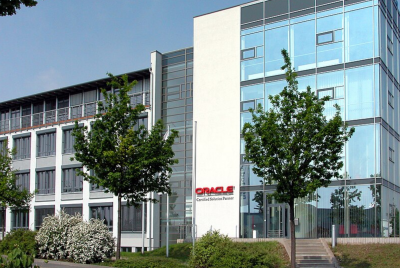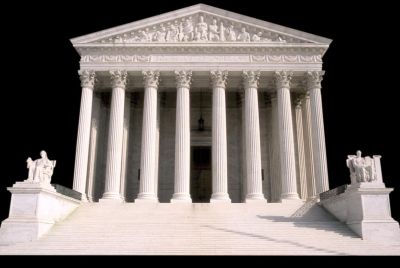Is Driving Uber, Lyft and DoorDash Worth It: Many Earn Lower Than Minimum In 5 Major US Metros
The hourly net pay of delivery drivers outside of California is just $0.48 without tips

Many Americans take up gig driving to help make ends meet, with a notable portion relying on the job as their primary source of income.
A recent report from the Bank of America Institute revealed the number of customers gathering income from gig driving duties had tripled in the past four years.
However, it's a harsh reality that drivers are not being compensated adequately for their services. They are grappling to meet the local minimum wage figures in some areas, which makes it increasingly difficult for gig driving to be a viable option for Americans trying to make ends meet amidst rising living costs.
Research was carried out by the UC Berkeley Labor Center and the Center for Wage and Employment Dynamics to analyse the earnings of passenger and delivery drivers for six companies in January 2022. This included Uber, Lyft, Door Dash, Uber Eats, Instacart and Grubhub.
Over 50,000 trips and 1000 drivers within Los Angeles, Chicago, Boston, Seattle and San Francisco Bay metros were observed.
Data the researchers obtained through Gridwise found that passenger drivers in the Californian state, the Los Angeles and San Francisco metros, earned $7.12 net pay (after deducting expenses) without tips per hour and $9.09 with tips.
Passenger drivers outside those metros picked up hourly net earnings of $10.64 without tips and $12.94 with gratuities. This is the amount they actually take home after all expenses are accounted for.
Delivery drivers rely much more on tips for earnings than their passenger driver counterparts. The net hourly earnings they receive in California without tips is less than passenger drivers with $5.93, but with gratuities, their pay is higher at $13.62. Non-Californian delivery drivers relied even more on tips as they earned just $0.48 hourly without them whilst making significantly more with $9.87 thanks to tips.
However, these net hourly earnings are smaller when determining employer payroll taxes drivers must pay, known as the adjustment of net employee-equivalent pay.
Californian passenger drivers then earn $5.97 without tips and $7.63 with, whilst delivery drivers in the state make $4.98 before gratuities and $11.43 once they are included. Outside of the metros in the Golden State, passenger drivers' net employee equivalent pay, excluding tips, was $9.18, but they earned $11.14 with them. With the earnings adjustment, delivery drivers counted on just $0.40 to be made without gratuities whilst making $8.36 with tips factored in.
The data determines that the gig drivers analysed from these five metro spots in the United States are making less than the minimum wage in their city. Chicago and Boston's local hourly minimum wage is $15, Los Angeles' is $16.90, San Francisco pays $18.07, and Seattle has the highest minimum wage at $19.97.
Regarding median gross pay per hour, passenger drivers earned above the minimum wage in all five metros, whilst delivery drivers at least met the minimum wage, with some earning above the minimum. The issue is gig drivers lose a portion of their earnings because of expenses from each working hour.
In California, this puts delivery drivers back $7.44 and passenger drivers $14.03, and in the other areas, the expenses cost delivery drivers $7.60 and $11.68 for passenger drivers.
The gig drivers face a significant blow to their earnings as they are not paid during waiting periods between pickups or drop-offs. This is a crucial aspect that needs immediate attention, as it directly affects their income. Passenger drivers spend up to 28 per cent of their shift waiting for their next customer, and a third of their miles get spent getting to destinations to pick up their customers.
Delivery drivers are worse off as roughly half of their mileage each shift is spent during periods when they are waiting. Twenty-eight per cent of their shift covers the period where they are not actively working.
Due to operating as independent contractors, gig drivers unfortunately become victims of 'algorithmic wage discrimination' from delivery or ridesharing organisations. This is a term used to describe the practice of these companies using algorithms to determine driver pay, which often results in lower wages for drivers.
Additionally, as independent contractors, gig drivers are not entitled to minimum wage pay or compensation for the time between pickups, further exacerbating their financial struggles.
The Proposition 22 initiative was brought forward in late 2020 in California and predominantly benefited the ride-hailing companies. They did not have to treat their drivers like employees and hand them the full benefits and protections.
The initiative promised Californian drivers 120 per cent of the local minimum wage for each hour spent actively working, $0.30 for every mile spent driving passengers and health insurance stipends for workers working over 15 hours per week.
However, there was significant opposition to the introduction of Proposition 22 by many driver groups as they felt they had been exploited and underpaid by the big ridesharing organisations for some time. These groups argued that Proposition 22 did not provide adequate protections and benefits for gig drivers, and in fact, it further entrenched the exploitative practices of these companies.
Californian passenger drivers did not benefit massively from Proposition 22 as those operating in the Los Angeles and San Francisco metros earned less without tips than workers from the other areas.
Delivery drivers in California, who rely heavily on tips, earned only $3 per hour more with gratuities than their counterparts outside the state. This shows that while Proposition 22 promised certain benefits to gig drivers, the actual impact on their earnings was not significant, and in some cases, their earnings even decreased.
Furthermore, Proposition 22 was more helpful to delivery drivers as 66 per cent of DoorDash workers and 48 per cent of Uber Eats workers benefited from the new adjustments. Only five per cent of Uber drivers had their income adjusted.
© Copyright IBTimes 2025. All rights reserved.






















